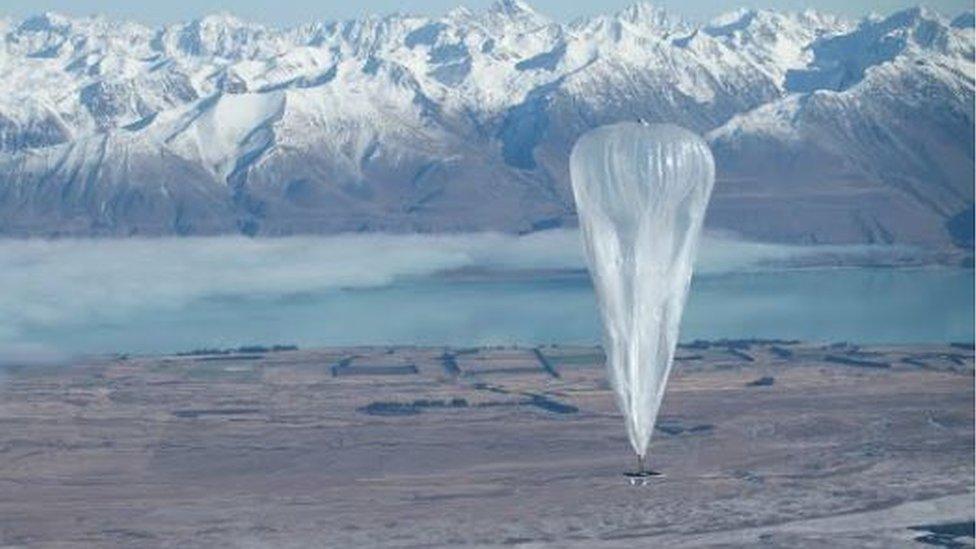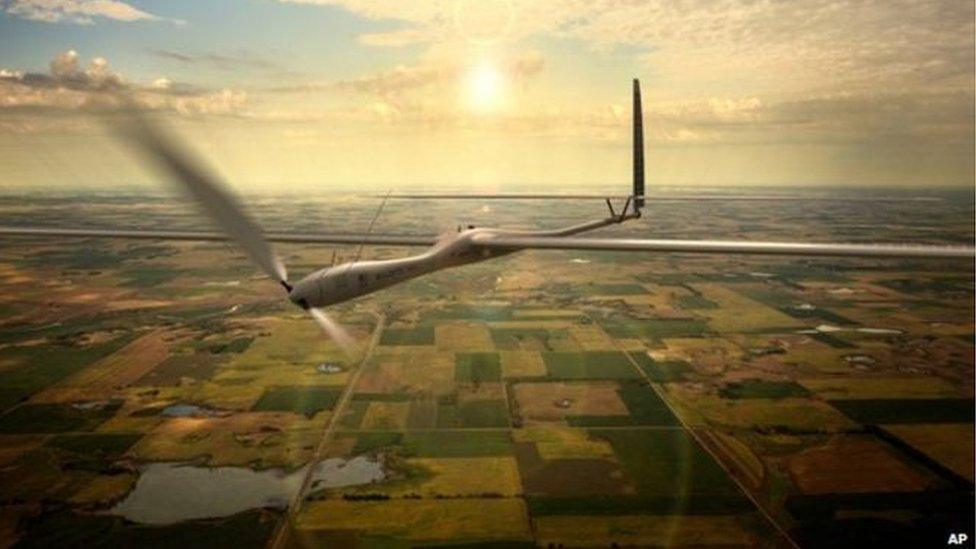Google hails net balloon ‘breakthrough’
- Published
- comments

Researchers at Google say they are “years closer” to rolling out a network of huge balloons to provide connectivity to rural areas.
The Project Loon team, part of the company’s X research lab, said it was now able to use machine learning, external to predict weather systems.
It means the firm has far greater control over where its balloons go, making it possible to focus on a specific region, rather than circumnavigating the globe.
Clustering a small number of balloons greatly reduces the cost of the idea, Google’s “captain of moonshots”, Astro Teller, told reporters.
"We can now run an experiment and try to give service in a particular place in the world with ten, twenty or thirty balloons,” he said, rather than the hundreds needed previously.
“Real users” will be able to use the system in the “coming months”, he added - but he did not specify where the initial roll out would take place.
Rural ambition
Google’s aim is to provide connectivity to the around four billion people in the world who do not have access to the internet, particularly those in difficult-to-reach rural areas.
Rather than undertake huge construction projects to replicate connectivity networks in the developed world, the firm has instead experimented with beaming down connectivity from a network of huge, tennis-court sized balloons.
The balloons float in the stratosphere around 11 miles high. By raising or lowering altitude, the balloons can be caught in different weather streams, changing direction.
By using machine-learning algorithms, Google thinks it has cracked a way to predict weather with enough accuracy to make it possible to hover balloons over a relatively small area for a long period of time.
Last last year the firm was able to keep a cluster of balloons over Peru for three months.
Spin off
Over the past year Google has come under increasing pressure from its shareholders to rein in the costs of its more outlandish ideas.
Last month, the firm has spun off its self-driving project into a new company - Waymo - and has stepped up attempts to commercialise the technology amid criticism it was taking too long to make money from its work.
Mr Teller said Project Loon was one of the more “mature” moonshot ideas at the company, but while it was entering into contracts with telecoms firms, Google was in “no rush” to make Project Loon a stand-alone business.
“The service has a much better chance of being profitable which is obviously exciting for us,” he said.
"Things have gone much better than we anticipated they could go. That has made the prospects of Loon even better than we had anticipated.”
Falling out of the sky
One key hurdle for the company to overcome is the reliability of its balloons. To date, the record for continuous balloon flight has been 190 days.
At a research lab within Google’s campus in Mountain View, California, development teams painstakingly analyse each failed balloons on a huge scanner nicknamed “Billie Jean” owning to light panels reminiscent of the illuminating pavement in Michael Jackson’s iconic music video.
Other technologies trying to achieve similar goals have been tested by Google and others. The company recently shut down Project Titan, an effort to use solar-powered drones to deliver connectivity to a wide area. The programme was cancelled owing to economic and technology difficulties, the company said.
Facebook has attempted to work with similar technology. Its Project Aquila drone, which is being developed in the UK, suffered a major setback when one of its craft crashed last June.
On the challenge facing Project Loon, Mr Teller admitted that many at the company did not think it would ever actually work.
“If we’d known how hard it was going to be, we probably never would have tried,” he wrote in a blog post published on Thursday.
Follow Dave Lee on Twitter @DaveLeeBBC, external and on Facebook, external
- Published12 January 2017

- Published20 January 2017

- Published13 December 2016